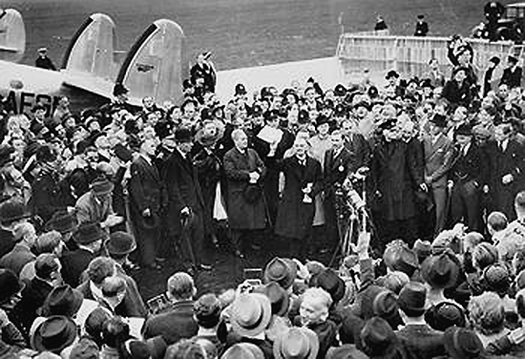Neville Chamberlain: Villain or Hero?
Historian article

Perhaps no other British figure of the twentieth century has been as vilified or as celebrated as Neville Chamberlain, the British Prime Minister from 1937 to 1940. In 1999, a BBC Radio 4 poll of prominent historians, politicians and commentators rated Chamberlain as one of the worst Prime Ministers of the twentieth century.
A future Prime Minister, Harold Macmillan, even burned him in effigy on Guy Fawkes Night. Yet, while he was alive, crowds cheered him, the House of Commons applauded him, the King and Queen thanked him for his efforts, and the London Times wrote: "No conqueror returning from a victory on the battlefield had come adorned with nobler laurels." So which is it: is Chamberlain a villain or a hero?
The people who revile Chamberlain do so because they see him as the one man who could have stopped World War Two before it happened but he failed to do so. By the late 1930's, Adolf Hitler was a menace on the European stage. He had already broken the Treaty of Versailles numerous times by rebuilding the German army, marching troops into the Rhineland, and by annexing Austria into the Third Reich.
By September 1938, Hitler had set his eyes on a new target, the Südetenland, in northern Czechoslovakia. With Europe on the brink of war, Chamberlain flew to Germany not once, not twice, but three times in the space of two weeks to placate Hitler. By the time he left, Chamberlain had handed over the Südetenland to Germany. By giving in to Hitler, so conventional wisdom goes, Chamberlain only encouraged Hitler's appetite for other lands. This policy of "appeasement" would encourage Hitler to invade Poland one year later and this began the Second World War...
This resource is FREE for Historian HA Members.
Non HA Members can get instant access for £2.75

